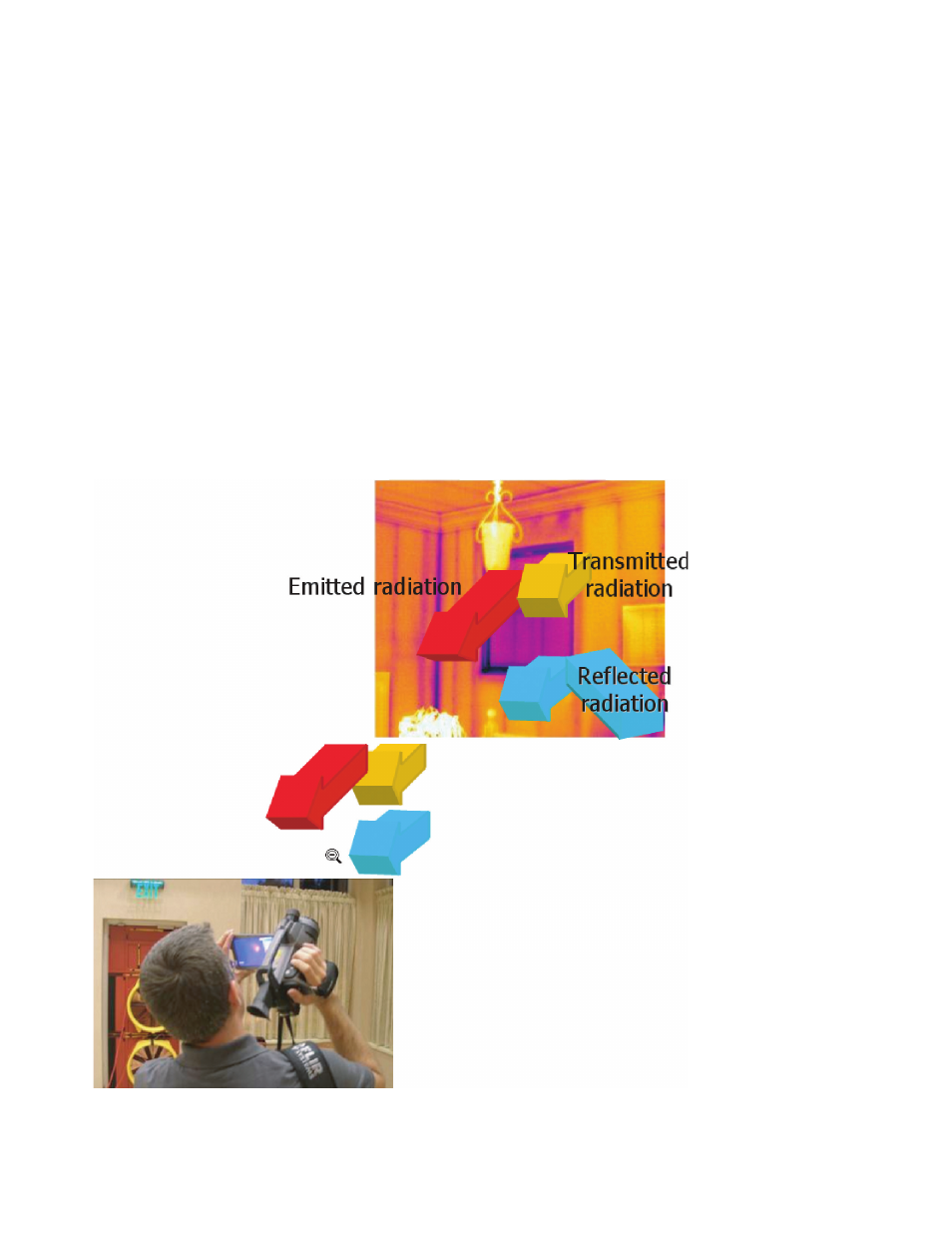Retrotec USACE User Manual
Page 339

Appendix G G9
range) and 8–14 µm (longwave range). Newer technology may refer to three
ranges, 1–3 µm (shortwave), 3–5 µm (midwave) and, 8–14 µm (longwave).
Thermal observations at large distances can be affected by atmosphere ab-
sorption by gases within the atmosphere, primarily by gaseous H
2
O and CO
2
.
Depending on the target, scanning distance, and optics, the IR camera gives the
temperature distribution of the observed object.
IR imaging cameras do not “see” or measure temperature. These cameras
acquire the electromagnetic energy of the infrared spectrum (wavelength usually
considered between 0.8–14 µm) emitted from the surface object and assign a tem-
perature to the total amount of energy the camera receives. Actually, the radiation
received by the IR camera is a sum of three components (see Figure G5):
Energy emitted from the surface (a function of the object’s temperature)
1.
Energy refl ected from the surface (a function of the ambient or refl ected
2.
temperature) (see Figure G6)
Energy passing through the object from source located behind the object
3.
(such as occurs in thin plastics) (see Figure G7)
Figure G5. Thermal image and the three represented components of infrared radiation the camera
detects: emitted, refl ected, and transmitted radiation. (Figure from Building Science Institute.)
